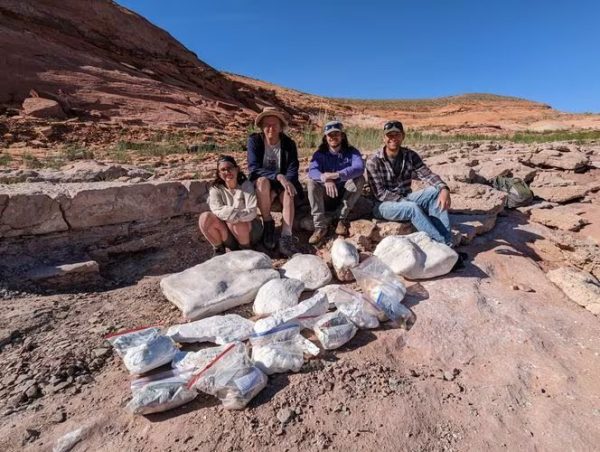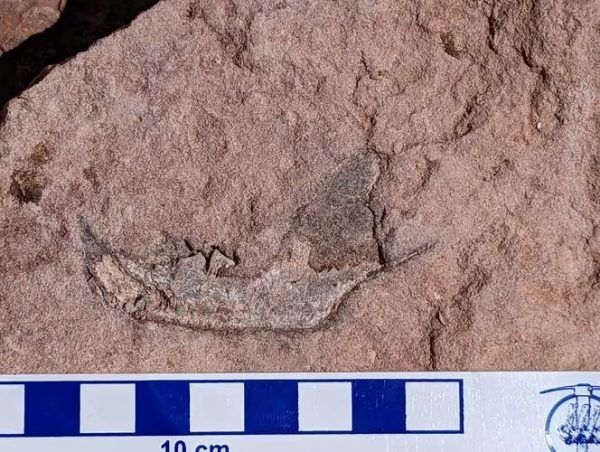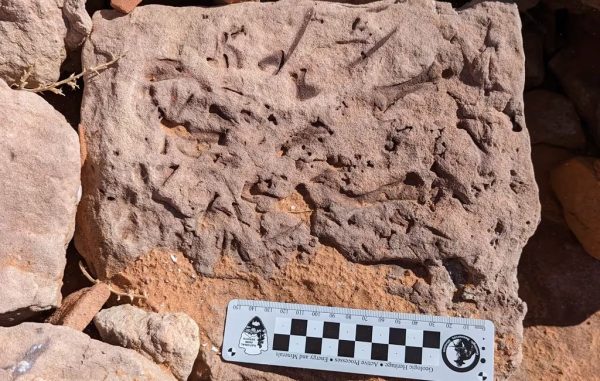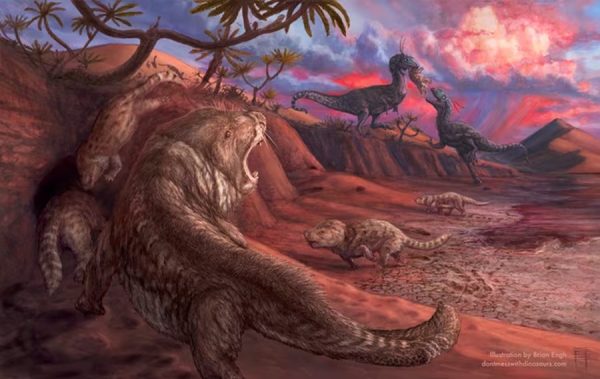A team of paleontologists exploring the receding shoreline of Lake Powell in Utah made an unexpected and thrilling discovery – an “extremely rare” fossil treasure trove. What started as an expedition to study dinosaur tracks turned into a significant paleontological find, shedding light on the ancient history of the region.

The lead paleontologist, Andrew Milner, curator at the St. George Dinosaur Discovery Site at Johnson Farm, stumbled upon a foot-long stone block with peculiar brown stains during a walk to the campsite’s makeshift latrine.
Initially assuming these were plant impressions, a closer examination revealed something far more extraordinary – the fossilized remains of bones.
The subsequent excavation uncovered an astonishing site, revealing the skeletons of at least 30 tritylodonts. These early mammal relatives, similar in size to basset hounds, date back to the early Jurassic Period.

What makes this discovery particularly remarkable is that these tritylodonts represent some of the youngest specimens ever found in the United States.
The fossilized remains, including several intact skulls, provide a unique opportunity to study these ancient creatures and gain insights into their lives. Tritylodonts were herbivores that lived in social groups, exhibiting behaviors similar to modern rodents. Their large upper and lower incisors, designed for shredding fibrous plants, made them essential components of the prehistoric ecosystem.
The significance of this discovery extends beyond the immediate findings. Tritylodonts represent a crucial transitional phase in the evolution of mammal precursors to true mammals.

Understanding their adaptation and survival during significant geological and climatic changes provides valuable clues about the broader patterns of life during the Jurassic Period.
The fossil site, buried for approximately 180 million years, offers a glimpse into a bygone era when these mammal relatives roamed the region. The rarity of such discoveries in this rock formation, created from the remnants of a vast desert that stretched across the Colorado Plateau during the time of Pangea, adds to the significance of the find.

While the initial excavation was met with immense excitement, scientists believe that this is only the beginning. As Lake Powell’s water levels continue to decline due to extreme drought and aridification, previously submerged areas may reveal more fossilized treasures.
The paleontological community anticipates ongoing research and exploration in the Lake Powell region, with the potential for further groundbreaking discoveries that could reshape our understanding of prehistoric life in North America.
This unexpected and unique fossil treasure trove is considered one of the most important vertebrate discoveries in the United States this year.

As scientists delve deeper into the secrets hidden within these ancient remains, they hope to uncover more about the mysteries of evolution and adaptation during a transformative period in Earth’s history.





